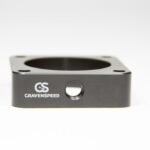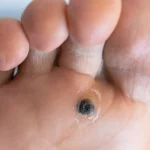Chest compression feedback devices are increasingly ubiquitous in modern resuscitation efforts. Their primary function is to provide real-time data and guidance to rescuers performing cardiopulmonary resuscitation (CPR). This facilitates optimizing the quality of chest compressions, a critical determinant of survival during cardiac arrest.
At the most fundamental level, a chest compression feedback device monitors several key parameters:
- Compression Depth: This measures how far the chest is depressed with each compression. Guidelines generally recommend a depth of at least 2 inches (approximately 5 centimeters) for adults. Insufficient depth may not generate adequate blood flow to the brain and other vital organs.
- Compression Rate: This refers to the number of compressions delivered per minute. The current recommended rate is between 100 and 120 compressions per minute. A rate that is too slow or too fast can compromise the effectiveness of CPR.
- Recoil: Complete chest recoil, or allowing the chest to fully return to its original position after each compression, is crucial. Incomplete recoil can increase intrathoracic pressure and reduce venous return, hindering blood flow. The device monitors the degree of recoil achieved.
- Hand Placement: Some advanced devices incorporate sensors to detect hand position on the chest. This ensures that compressions are delivered over the lower half of the sternum, the optimal location for effective cardiac compression. Improper hand placement can lead to injury and reduce the efficacy of compressions.
- Interruptions: Minimizing interruptions in chest compressions is paramount. The device tracks the duration and frequency of pauses in compressions, providing feedback to encourage continuous chest compressions. Even brief interruptions can significantly reduce the chances of successful resuscitation.
Beyond these core parameters, some sophisticated feedback devices offer additional functionalities. These can enhance the precision and efficacy of CPR.
- Perfusion Feedback: While not directly measuring chest compression mechanics, some systems integrate physiological monitoring (such as end-tidal CO2 monitoring) to provide an indirect assessment of perfusion. This helps rescuers gauge the effectiveness of their compressions in generating blood flow. This is a crucial datapoint for optimizing the resuscitation strategy.
- Adaptive Guidance: Based on the data collected, the device may provide adaptive guidance to the rescuer. This might involve suggesting adjustments to compression depth, rate, or hand placement in real-time. This personalized feedback loop optimizes performance on an individualized basis.
- Data Recording and Review: Many devices record all compression data, which can be reviewed later for quality assurance and training purposes. This allows healthcare providers to identify areas for improvement and refine their CPR skills. It also provides valuable insights into the effectiveness of different resuscitation strategies.
- Ventilation Prompts: While primarily focused on compressions, some devices also provide prompts for ventilation, reminding rescuers to deliver breaths at the appropriate rate and volume. This ensures that ventilation is coordinated with compressions for optimal gas exchange.
The increasing adoption of chest compression feedback devices stems from a growing recognition of the variability in CPR quality when performed without guidance. Studies have consistently demonstrated that even trained healthcare professionals often fail to meet recommended guidelines for compression depth, rate, and recoil. Feedback devices address this issue by providing objective, real-time information that allows rescuers to adjust their technique and deliver more effective CPR.
The fascination with these devices reflects a broader trend in healthcare: the embrace of technology to improve patient outcomes. By quantifying and optimizing a complex manual skill, chest compression feedback devices represent a tangible application of data-driven decision-making in the critical setting of cardiac arrest. They move the practice from a purely tactile skill into one informed by precise metrics. This shift provides rescuers greater confidence, improves teamwork, and ultimately, enhances the chances of survival for patients experiencing cardiac arrest. Furthermore, the data collected by these devices can contribute to ongoing research and refinement of CPR guidelines, furthering the evolution of resuscitation science.
In essence, a chest compression feedback device is not merely a monitoring tool; it is an integral component of a comprehensive resuscitation strategy. It empowers rescuers to deliver high-quality CPR, optimize perfusion, and ultimately, improve patient outcomes in the face of sudden cardiac arrest.










Leave a Comment